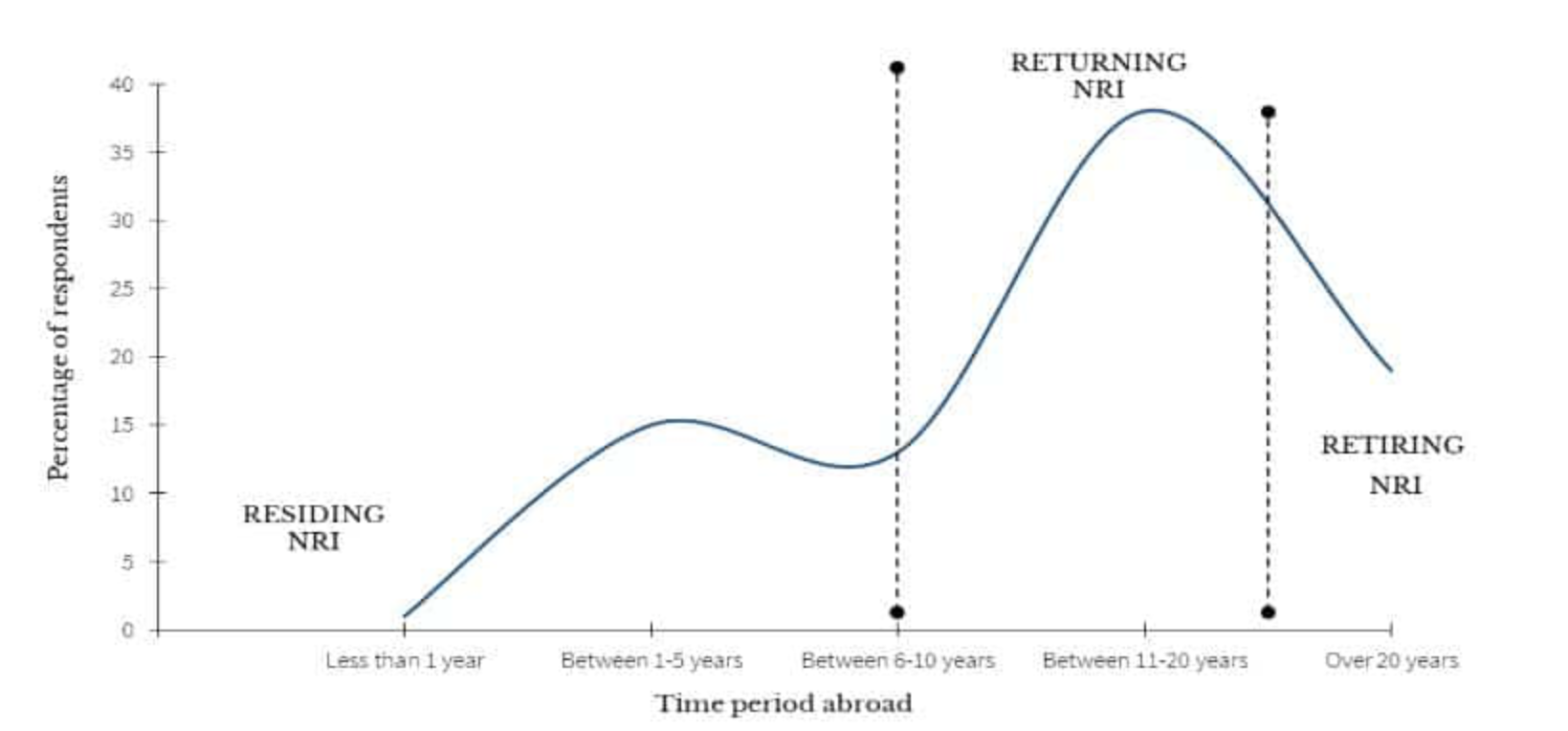A few decades ago, skilled and educated migrants flocked to Silicon Valley, London, Toronto and other places for better job and education opportunities. This phenomenon is widely known to people as “Brain Drain”. As per the Ministry of External Affairs, around 13.6 million Indian nations were living abroad as of February 2020. It had also been noted that a considerable portion of this population who are students and work permit professionals, expressed that they want to return to their home country - India. This positive trend of “Reverse Brain Drain” can be attributed to improved infrastructure or better work opportunities.
What is Reverse Brain Drain
Brain drain occurs when elite migrants like - PhD Scholars, researchers, scientists, engineers, and other intellectuals migrate to a developed country for higher education, to do research, or gain working experience. The concept of Reverse Brain Drain, on the converse, is when people move in reverse, from a more developed country to a lesser developed country but one that is developing rapidly. These migrants may have accumulated savings and developed skills overseas that can be used in their home country.
Today, India has one of the world’s largest and most successful diasporas, with millions of expatriate Indians and people of Indian origin living across a wide range of countries, seeking more economic opportunity and material comforts. Over the last two decades, the next generation of Indian-origin people has come to represent a highly skilled group of locals in every country they live in.
When did the 'Reverse Brain Drain' Phenomenon start?
There was a time when India and China were both known for their muscle power, or simply, manual labour which was in great demand for trade and manufacturing. But, in the last 40 years, they started developing a new kind of power that has been developing, attributed largely to the growth of technology. This power is aptly coined as 'brainpower' or skilled labour.
However, these countries could not sustain this new kind of power and it began slipping away from these countries due to lack of infrastructure, education quality and fewer job opportunities. For the longest time, this 'brainpower' was being drained and used to boom the economies of already developed countries. A change was observed after the 2008 financial crisis. The brain or “human capital” started moving back from a more developed country to a less developed country rapidly.
Reasons for Reverse Brain Drain in India
Throughout 2020, returnees have been hitting the reverse gear, due to growing opportunities in India, and more recently, the impact of the pandemic. Some of the reasons for this trend are as follows:
A magnet for global healthcare investment, innovation and growth: Over the last few years, India’s healthcare and life sciences sector has been rapidly developing with increasing investments and a competitive edge in vaccines, and generics among others. People have come to realise that India has more opportunities for professional development, wealth prospects and increasing quality of life. Multinational companies have come to rely heavily on India in terms of several aspects such as manufacturing, services etc. and not just for outsourced business functions with an eye on cost savings. Several enterprises have built global competencies and roles based in India and moved up the value chain to set up global centres of excellence in India.
Turn Entrepreneur: There is a lot of potential demand in India as it is a developing country where needs must be met. The population is huge and diverse, so there is a potential for a high customer base. Private equity and venture capital have played the role of a lucrative springboard in providing growth capital for Indian businesses. In just the last few years, these two alternative investment channels have moved from a $10 billion opportunity to almost $50 billion in 2019.
Impact of Covid-19: The pandemic has disrupted the lives of overseas Indians massively; there are stories of the salaried class – layoffs across sectors, salary cuts and delayed increments have led to senior leaders thinking of coming back to India. It’s important to note that returning NRIs are those who stayed away from India for 8-20 years and are keen on working in India after they return.
Returning to run family-owned businesses: With second and third-generation entrepreneurs returning to run family businesses, companies are profiting from the experience they gained from working and studying abroad.
Most senior leaders prefer to work for an MNC or a large Indian organisation with a global vision as they would wish to leverage their global exposure and contribute to the company’s growth in India. Some of the roles where these talents add value are:
- Business functions and P&L leadership roles
- Consultancy and advisory
- Investment professionals or investor
- Social impact sector
- Functional leaders with an emerging market remit
- Product Innovation
- Global Manufacturing
While the vast majority of the "reverse brain drain" has happened from the U.S., Germany and Britain, scientists have also started coming from South Korea and Japan. Schemes set up by the Indian government, including the setting up of The Ramanujam Fellowship, Innovation in Science Pursuit for Inspired Research (INSPIRE) Programme and the Ramalingaswamy Fellowship, are just a handful of programs that are being pushed by India to entice NRIs to return to India.
It seems like the tide has finally passed. Two decades ago, India was worried about the "brain drain". Skilled Indian students were leaving the country which caused India concerns that they would not return. But, the phenomenon of reverse brain drain is slowly bringing the talented community back to India, with India’s emerging large economy and a plethora of opportunities attracting them to come back.
